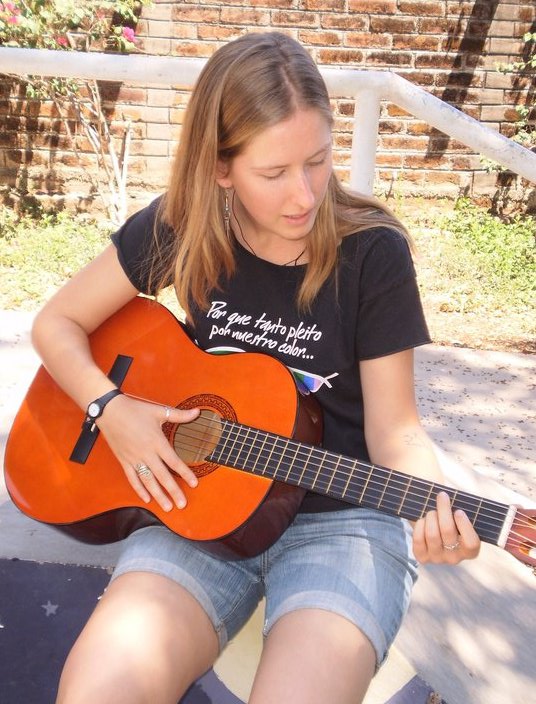
These are the photos from Wednesday's trip to the town of Salcaja, about half an hour from Xela. We visited a "campo de textiles" (literally a textile field). The folks in Salcaja weave a very specific kind of cloth that does now pertain to any specific ethnic group in Guatemala - something of a national semi-indigenous (though based on some Spanish methods) weaving tradition. Very interesting. The gentleman in the first photos took time off from his day to show us a bit of the process. The woman in purple and I interpreted (ha!) for him. Daunting, but doable. (And no, my Spanish is not anywhere near the point where I should be interpreting things.) The field is the only place in town long enough to set up the process, so they weave outside in a community setting rather than in individual houses.
We then visited the oldest church in Central America, La Ermite de la Virgen de la Concepcion la Conquistadora (the Hermitage of the Virgin of the Conception the Conqueror). It was built in 1524 and the altar is original. (The kind of freaky Virgin doll is decidedly not, in my estimation.) It was incredibly interesting being there after having spent the last four years partly in a program looking at colonization and the last five weeks immersing myself in a highly colonized atmosphere (though not so much more than our own - perhaps less in some ways). There's a lot to repent, that's for sure.
Finally, we went to a home brew place where a very local drink called Caldo de Fruitas (Fruit Soup) is made. Not my favorite drink - very sweet and fruity, shocker. But the family is also involved in the weaving process, so the man in the later photos demonstrated for us for a couple minutes.
Yesterday, we had an incredible conference on migration and globalization. The presenter in an incredibly astute, savvy ex-immigrant who "deported himself" back to Guatemala a couple years ago in order to work with youth here who "think that the US is the best place in the world" - so that they know the full reality of what they take on if they leave. And more importantly, to try to develop programs for deportees and a form of alternative economy that could prevent so many people from having to leave in the first place. One of the communities he works with here is a place we visited when I was here with CGE and is well worth a plug: the community of Santa Anita la Union, made up of 36 families in which the parents are ex-guerrilla combatants. It is a truly special community and it was really a privilege to hear our presenter's story. I don't have my notes right this second and I want my post on the conference to do it justice, so it will have to wait, but it is coming.
I am going to be studying in PLQ another week as well, which I'm thrilled about.

3 comments:
Gostei tu blog.
I'm interested in why the church includes "the Conqueror" in the name. Is the Virgin the conqueror? Or is this imperial perspective? Where's it from? Do you know?
Dad - yeah, I think she is the Conqueror. My understanding is that it was named this way in thanksgiving to the early successes of the conquest (pre-1524) and for the anticipated future success as well. Very Christ-like, no?
Post a Comment